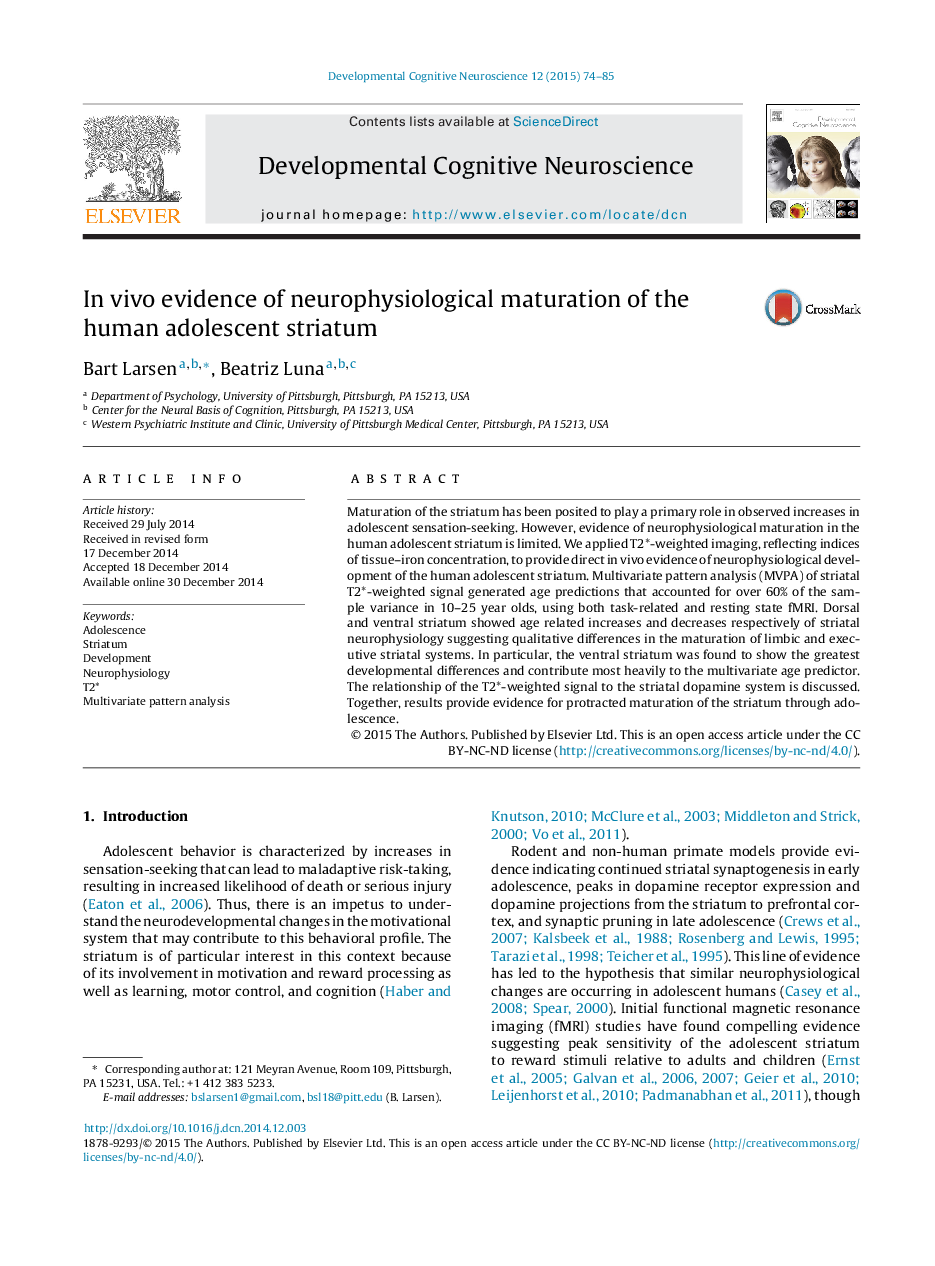| کد مقاله | کد نشریه | سال انتشار | مقاله انگلیسی | نسخه تمام متن |
|---|---|---|---|---|
| 4316591 | 1613111 | 2015 | 12 صفحه PDF | دانلود رایگان |
• We examine age-related differences in striatal neurophysiology during adolescence.
• Striatal neurophysiology is measured in vivo with T2*-weighted imaging.
• Multivariate patterns of striatal T2*-weighted signal generate highly significant age predictions.
• Developmental trajectories differ between limbic and executive striatal systems.
• Neurophysiological maturation of the striatum protracts into adulthood.
ABSTRACTMaturation of the striatum has been posited to play a primary role in observed increases in adolescent sensation-seeking. However, evidence of neurophysiological maturation in the human adolescent striatum is limited. We applied T2*-weighted imaging, reflecting indices of tissue–iron concentration, to provide direct in vivo evidence of neurophysiological development of the human adolescent striatum. Multivariate pattern analysis (MVPA) of striatal T2*-weighted signal generated age predictions that accounted for over 60% of the sample variance in 10–25 year olds, using both task-related and resting state fMRI. Dorsal and ventral striatum showed age related increases and decreases respectively of striatal neurophysiology suggesting qualitative differences in the maturation of limbic and executive striatal systems. In particular, the ventral striatum was found to show the greatest developmental differences and contribute most heavily to the multivariate age predictor. The relationship of the T2*-weighted signal to the striatal dopamine system is discussed. Together, results provide evidence for protracted maturation of the striatum through adolescence.
Journal: Developmental Cognitive Neuroscience - Volume 12, April 2015, Pages 74–85
